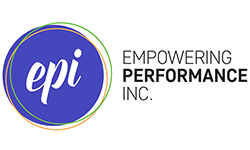Getting Learner Feedback in a Virtual Setting
All instructional designers and developers know that learner feedback, especially during product iteration, is gold!
Whether you conduct one-on-one empathy interviews, small or large focus groups, or observe learners using the product or course, you’ll glean invaluable insight on learning transfer and user experience. Incorporating learner feedback sessions during prototyping and throughout the iteration process can even cut client costs in the long-term, by making targeted adjustments during the build.
But creating the feedback environment, where you can actually receive authentic and valuable insight, isn’t always easy, especially as most of us are now entirely virtual.
We’ve recently had the opportunity, with long-time partner Charlie Life and Leadership Academy (CLLA), to conduct a series of virtual focus groups with university students using Zoom. CLLA is a nonprofit foundation that brings online leadership skills training to emerging leaders nationwide. EPI is in the process of rolling out close to 20 new online courses by the fall semester, so we’ve needed to ramp up our real-time learner feedback to ensure we’re hitting the specific learning and user needs of this savvy demographic.
Our online focus groups have been lively, insightful, and we’ve discovered a few tips and tricks to pass along!
Take time to make time.
It sounds simple, but we can’t emphasize this tip enough! In order to get the feedback you truly need in the amount of time you have with learners, take time to plan and strategize. Before the focus group session, consider these time-saving steps:
Send out a well-crafted survey to participants. This is a simple way to capture initial feedback, so you can direct the focus group session on digging deeper into hot-spots of additional need.
Share project context and/or any administrative tasks to focus group participants in advance.
Identify your priority questions and plan to ask those at the beginning of the session. Focus group discussions are often rich and the time can slip away quickly; you want to conclude the session knowing you’ll (at least) have your most important questions answered.
Familiarize yourself with the technology and its full capability before the online focus group. You don’t want to waste time testing functionality in real time. Check out this great checklist resource for setting up a Zoom classroom.
Use tech features to capture the group’s diversity of voices.
These are a few simple ways to capture insights from everyone with Zoom functionality:
Use the chat feature. It’s an efficient tool for capturing answers. Determine ahead of time which questions are optimal to answer this way. You can print the chat feed to analyze at a later time.
Use breakout rooms and assign different questions to each group. This allows for smaller group sizes and a more intimate feel, allowing each participant to share their voice and creative insight. (Just make sure you have a co-facilitator or a volunteer to take notes in each room! Alternatively, each group could report their top insights back to the larger group after breakouts.)
Familiarize yourself with the group’s participants and their diverse backgrounds. This will prepare you to capture a variety of opinions in response to your questions.
Make video your friend.
Participant feedback during focus groups comes in many different ways! Audio is key, you can listen for tone and emphasis, but audio and video are better! Body language and facial expressions will provide even greater nuance and insight into a learner’s true feelings and reactions. Plus, you'll catch other forms of nonverbal communication.
Keep participants engaged.
Even in an online focus group, there are ways to keep all participants engaged. Here are a few we’ve used successfully:
Avoid leading questions. Open-ended questions encourage deeper insight, critical thinking, and creativity from participants.
Hold the participants accountable for their feedback, by following-up on individuals’ answers, as much as time allows. If someone suggests an idea, ask them to explain and provide examples.
Use emojis! If one individual is sharing, and other participants agree with their comments, encourage the focus group members to “thumbs up” or acknowledge visually.
Ever conducted a virtual focus group? What other tips would you include to best capture learner feedback? Share with us via email!
P.S. If you want to learn more about elearning at EPI, check out our elearning blog series, starting with this one!

